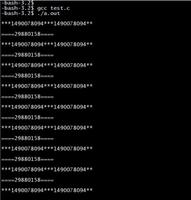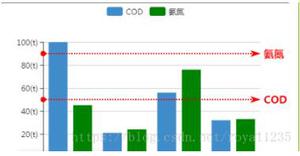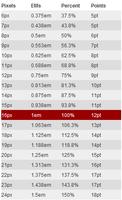在几何级数上返回均匀间隔的数字,并在 Numpy 中设置要生成的样本数
要在几何级数上返回均匀间隔的数字,请使用Python Numpy 中的方法。第一个参数是“开始”,即序列的开始。第二个参数是“结束”,即序列的结束。第三个参数是 num,即要生成的样本数。默认值为 50。numpy.geomspace()
start 是序列的起始值。如果是序列的最终值,则停止,除非端点为 False。在这种情况下,num + 1 个值在对数空间中的间隔上隔开,其中除了最后一个(长度为 num 的序列)之外的所有值都将返回。端点,如果为真,则停止是最后一个样本。否则,不包括在内。默认为真。
结果中用于存储样本的轴。仅当 start 或 stop 类似于数组时才相关。默认情况下 (0),样本将沿着在开始处插入的新轴。最后使用 -1 得到一个轴。
脚步
首先,导入所需的库 -
import numpy as np
在几何级数上返回均匀间隔的数字,使用方法 -numpy.geomspace()
arr = np.geomspace(100, 200, num = 5)print("Array...\n", arr)
获取数组类型 -
print("\nType...\n", arr.dtype)获取数组的维度 -
print("\nDimensions...\n",arr.ndim)获取阵列的形状 -
print("\nShape...\n",arr.shape)获取元素的数量 -
print("\nNumber of elements...\n",arr.size)示例
import numpy as np输出结果# To return evenly spaced numbers on a geometric progression, use the numpy.geomspace() method in Python Numpy
# The 1st parameter is the "start" i.e. the start of the sequence
# The 2nd parameter is the "end" i.e. the end of the sequence
# The 3rd parameter is the numi.ethe number of samples to generate. Default is 50.
arr = np.geomspace(100, 200, num = 5)
print("Array...\n", arr)
# Get the array type
print("\nType...\n", arr.dtype)
# Get the dimensions of the Array
print("\nDimensions...\n",arr.ndim)
# Get the shape of the Array
print("\nShape...\n",arr.shape)
# Get the number of elements
print("\nNumber of elements...\n",arr.size)
Array...[100. 118.9207115 141.42135624 168.17928305 200. ]
Type...
float64
Dimensions...
1
Shape...
(5,)
Number of elements...
5
以上是 在几何级数上返回均匀间隔的数字,并在 Numpy 中设置要生成的样本数 的全部内容, 来源链接: utcz.com/z/297189.html









